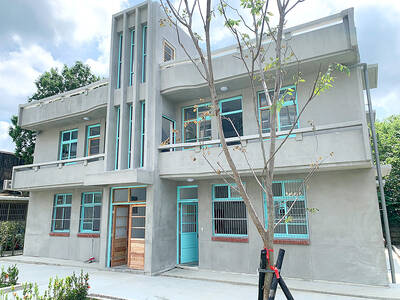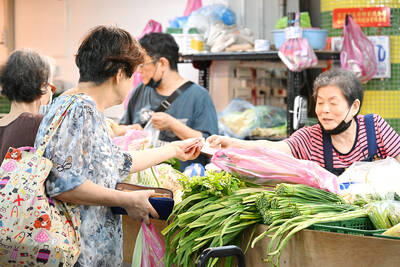The novelty factor may have worn off but the romance between Parisians and le Velib continues. Back from their long summer holidays, 215,000 of my fellow Parisians have renewed their annual subscription to the citywide bicycle scheme. These, together with other occasional cyclists, such as tourists, make up the 100,000 daily rentals. Needless to say, the scheme is a “succes formidable.”
Young entrepreneurs have turned the Velib into businesses, organizing paid-for Velib tours for American tourists in the Latin quarter. You can spot the riding hordes with their red jackets on, led by a lean Parisian student in a yellow vest. For those who prefer to go at their own pace, we thought the time right to devise a Guardian Velib tour. One that takes in the world’s oldest and biggest flea markets of St-Ouen to those of Vanves. This three-hour “mini tour de Paris” with its ups (to Montmartre) and downs (from Montmartre it’s downhill all the way) includes, bien-sur, bistro and cafe stops. It’s a north-south 15km ride that is best enjoyed on the weekend when the flea markets are lively with jazz bands, and the Paris street traffic is at its quietest.
In a few weeks, St-Ouen, like another 30 surrounding suburbs of Paris, will be equipped with Velib stations, but until then, the journey begins at the Velib dock station at Porte de Montmartre. Always choose a bike with a straight saddle (a saddle tilted backwards means it needs repairing), check your tires, light and brakes, and adjust the saddle to your height, making sure it’s not loose: I remember one epic ride with the saddle turning on its base like a weather vane.
My favorite route starts with a cycling flanerie through the streets of St-Ouen that bear revolutionaries’ names (the area has had communist mayors for a century). In St-Ouen, the urban landscape changes drastically from that of bourgeois Paris: low-rise 19th-century red brick factories and typical tiny 1930s workers’ houses. St-Ouen wouldn’t be the same, of course, without its many flea markets spread either side of rue des Rosiers: marches Paul Bert, Biron, Dauphine and Vernaison, to name but a few, have attracted junk fetishists like me since 1885. And the great thing about the Velib is that it has a basket that can hold anything up to the size of a cabin suitcase: very useful for that 1930s Bakelite hairdryer.
At the weekend, I often stop at La Chope des Puces for live jazz (122 rue des Rosiers, 1-40-11-02-49; jazz every Saturday and Sunday, 2pm to 7pm) and the bistro Paul Bert for a pate sandwich (20 rue Paul Bert, 1-40-11-90-28). The waiter there is always grumpy; it’s part of the folklore.
From St-Ouen, I usually cycle through Porte de Clignancourt, with its French West Indies locals living in 1930s council estates, and ride up, up, up rue Hermel where the view over the Sacre Coeur gives me just enough strength to keep going. My favorite 18th-arrondissement street is rue Lamarck, a winding road of blond stone Haussmannian buildings encasing the Montmartre hill like a snake. I always think of the chanteuse Edith Piaf, who often stopped at Le Relais Bistro (48 rue Lamarck, 1-42-64-04-17). As a child I couldn’t understand why people preferred Notre Dame to Sacre Coeur — to me there was nothing more beautiful than this big choux a la creme.
In Montmartre, the best bit comes when you suddenly realize that from there on, it’s all downhill. Among my favorite stops in the descent is the leafy square sheltering the artists’ cafe, Le Botak (1 rue Paul Albert, 1-46-06-98-30). At the bottom of the hill, boulevard Rochechouart reminds the innocent cyclist that in Paris, the sex industry and romance are often intertwined: throngs of tourists come here to ogle Pigalle’s sex shops and buy a ticket to Le Moulin Rouge’s evening spectacles.
Time to leave the 18th arrondissement and cycle through the aristocratic 9th with its private cul-de-sacs and art nouveau squares such as place St Georges, a wonder of architecture best admired from the cafe A la Place St Georges (60 rue St Georges, 1-42-80-39-32). In comparison, the 10th arrondissement feels very industrious, with its narrow streets and delivery vans. I always marvel at 48 rue des Petites-Ecuries, which displays some of the most beautiful caryatids to be seen in Paris. The ride through rue St-Denis (the street may be one-way but cyclists are allowed to ride southward) is the best advert for little-known multicultural Paris with Asian, Vietnamese, Algerian and Turkish street vendors cohabiting with madames waiting for clients on their buildings’ doorsteps. St-Denis is, after all, the original haunt of Parisian prostitutes.
Across the Seine lies the Latin quarter and its bookish feel. No delivery vans, no prostitutes, just handsome students and their professors. These days, I stop at the Cafe Le Rostand (6 place Edmond-Rostand, 1-43-54-61-58), just to check on the last French intellectuals. The final leg of the journey is a very pleasant affair, cycling through the 14th arrondissement and its many colorful markets. And here you are, in Porte de Vanves, where antique and vintage clothes dealers have set up their stalls along avenue Marc Sangnier. Let’s find ourselves another classy bargain — using the money saved on the guided tour.

June 2 to June 8 Taiwan’s woodcutters believe that if they see even one speck of red in their cooked rice, no matter how small, an accident is going to happen. Peng Chin-tian (彭錦田) swears that this has proven to be true at every stop during his decades-long career in the logging industry. Along with mining, timber harvesting was once considered the most dangerous profession in Taiwan. Not only were mishaps common during all stages of processing, it was difficult to transport the injured to get medical treatment. Many died during the arduous journey. Peng recounts some of his accidents in

“Why does Taiwan identity decline?”a group of researchers lead by University of Nevada political scientist Austin Wang (王宏恩) asked in a recent paper. After all, it is not difficult to explain the rise in Taiwanese identity after the early 1990s. But no model predicted its decline during the 2016-2018 period, they say. After testing various alternative explanations, Wang et al argue that the fall-off in Taiwanese identity during that period is related to voter hedging based on the performance of the Democratic Progressive Party (DPP). Since the DPP is perceived as the guardian of Taiwan identity, when it performs well,

The Taiwan People’s Party (TPP) on May 18 held a rally in Taichung to mark the anniversary of President William Lai’s (賴清德) inauguration on May 20. The title of the rally could be loosely translated to “May 18 recall fraudulent goods” (518退貨ㄌㄨㄚˋ!). Unlike in English, where the terms are the same, “recall” (退貨) in this context refers to product recalls due to damaged, defective or fraudulent merchandise, not the political recalls (罷免) currently dominating the headlines. I attended the rally to determine if the impression was correct that the TPP under party Chairman Huang Kuo-Chang (黃國昌) had little of a

At Computex 2025, Nvidia CEO Jensen Huang (黃仁勳) urged the government to subsidize AI. “All schools in Taiwan must integrate AI into their curricula,” he declared. A few months earlier, he said, “If I were a student today, I’d immediately start using tools like ChatGPT, Gemini Pro and Grok to learn, write and accelerate my thinking.” Huang sees the AI-bullet train leaving the station. And as one of its drivers, he’s worried about youth not getting on board — bad for their careers, and bad for his workforce. As a semiconductor supply-chain powerhouse and AI hub wannabe, Taiwan is seeing